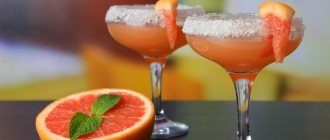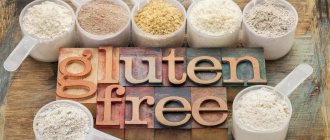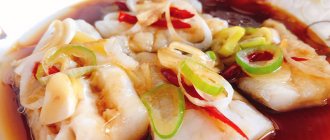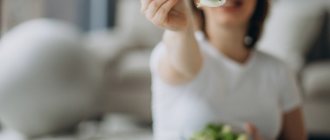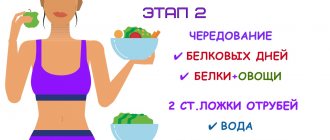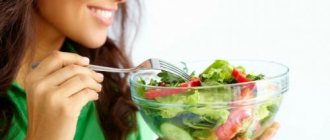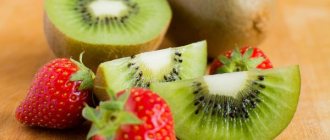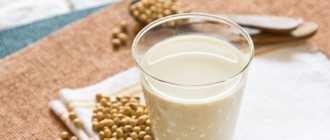General rules
Dietary Table No. 13 is prescribed for infectious diseases, pneumonia , bronchitis and suppurative lung diseases.
The purpose of its purpose is to increase the body's resistance to the infectious process, maintain general strength, and reduce intoxication. Any infectious disease is accompanied by fever , therefore the metabolic rate increases and, accordingly, the need for energy increases.
In conditions of a febrile state and the patient is on bed rest, it is necessary to spare the digestive organs (mechanical, chemical and thermal). Fractional meals are required in small portions, so meals are organized 6 times a day. Food is prepared pureed or chopped, it is boiled in water (steamed). Do not fry, stew or bake. Cold dishes must be at least 15°C in temperature, and hot dishes must be at least 65°C.
This therapeutic food has a reduced energy value since the content of fats and carbohydrates is reduced, and proteins are slightly reduced. According to the chemical composition: protein content 70 g (preference is given to milk proteins), fats 60-70 g and carbohydrates 300 g (of which 30% are easily digestible). Energy value is 2000-2100 kcal. The diet is characterized by a high content of vitamins and fluids. Free fluid is allowed to take 2 liters (in some cases more). It is this drinking regime that accelerates the elimination of toxins and, in general, quickly alleviates the patient’s condition.
Table salt is allowed 6-10 g, its amount is increased with excessive vomiting or sweating. The diet excludes coarse fiber, indigestible, fatty and salty foods. Preference is given to easily digestible dishes that do not cause flatulence and constipation .
When preparing your diet, it is important to follow the following rules:
- Do not allow the patient to go hungry during fever. It is necessary to provide a sufficient amount of food, but in fractional portions;
- overfeeding is contraindicated, even if the patient has an appetite;
- reduce fat content to the lower limit of normal, since they are difficult to digest;
- amount of proteins: at the rate of 1 g per kg of weight, but their amount is increased in case of protein-energy deficiency;
- exclude foods that mechanically irritate the gastrointestinal tract;
- monitor bowel function. For constipation, include laxative foods (raw vegetable juices, sugar, honey, boiled beets, prunes), and for diarrhea - limit sugar, exclude milk and cold drinks;
- for kidney symptoms, exclude strong broths, spices and extractives;
- introduce in small quantities or completely eliminate substances that irritate the nervous system (coffee, strong tea, rich broth).
The diet includes:
- low-fat milk, fermented milk products, cottage cheese, unsalted grated cheese;
- lean types of meat and fish;
- easily digestible cereals;
- non-rough vegetables and fruits;
- weak tea, rosehip decoction, still mineral water. Drinking regimen - 2-2.5 liters per day;
- Brewer's yeast;
- butter and vegetable oil (15 g per day);
- taking into account the increasing need for vitamins, include foods rich in vitamin C (rose hips, currants, sea buckthorn, citrus fruits), vitamin A (grained caviar, liver, egg yolks, butter), vitamin B2 (offal, yeast, cottage cheese, almonds), vitamin B6 (meat, rice, millet, potatoes).
Products to be excluded:
- causing flatulence ;
- hot seasonings and sauces (horseradish, mustard, mayonnaise, ketchup);
- concentrated broths;
- fat meat;
- salted and pickled vegetables;
- containing artificial colors.
What's not allowed?
If you follow table number 13, smoked meats, sausages, fatty meats, cabbage soup, borscht and other soups with fatty broth, salted and smoked fish, as well as fatty types of fish should be completely excluded from the menu. You will have to give up pastries, fresh bread and products made with rye flour. Fried or hard-boiled eggs, fatty dairy products, strong tea, coffee and alcohol are prohibited. You should also not eat vegetables such as onions, radishes, cucumbers, cabbage, garlic, sorrel, radishes and fruits that have a rough peel or high fiber content. Pearl barley, barley, corn, millet, whole pasta, egg noodles, all legumes are excluded from the menu; horseradish and mustard cannot be eaten.
Vegetables against colds. What foods will help strengthen your immune system?
Read more
Authorized Products
Diet No. 13, Table No. 13 includes:
- Wheat bread (highest grade), it should be dried, maybe crackers.
- Soups are prepared weak and low-fat. You can have meat and fish with egg flakes or quenelles. You can prepare pureed meat soups, slimy soups with boiled cereals (semolina, rice, oatmeal). You can also season with noodles and add vegetables.
- Low-fat varieties of fish are recommended (boiled, steamed, in pieces and minced). The skin is removed because it is difficult to digest.
- Meat and poultry are also low-fat varieties, steamed, in the form of boiled meat soufflé, steamed meatballs and cutlets.
- Before processing, meat and poultry are stripped of fat, tendons, fascia and skin.
- Fermented milk drinks (yogurt, kefir, yogurt, acidophilus), milk, cottage cheese, mild cheese (tinder), and sour cream are added to dishes.
- Eggs are allowed soft-boiled or scrambled eggs.
- Cereals (buckwheat, rice, oatmeal) are well boiled and semi-liquid, viscous porridge is obtained. To breed them, broth or milk is used.
- Vegetables (potatoes, beets, carrots, cauliflower, pumpkin) are prepared as side dishes. They are boiled, made into purees, stews, caviar, soufflés, and steam puddings.
- Only after recovery, salads from fresh vegetables (grated carrots, cucumbers, tomatoes, cabbage, radishes) are included in the diet.
- Fresh fruits may not be hard; the rest are subjected to heat or mechanical processing (purees, mousses, jelly).
- Fresh diluted (1:1) juices, compotes, jelly, fruit drinks, jam, confiture are recommended.
- Recommended drinks include: weak tea with lemon and coffee with milk, rosehip infusion.
- Sugar, jam, jam, honey, marmalade are allowed.
- Yeast contains B vitamins, proteins, biotin , pantothenic , folic acid , minerals and is very useful for these conditions. You can prepare a yeast additive for dishes. Place the yeast in a saucepan, add water (2.5 times more), simmer in a water bath, stirring. After 45, the “dish” is ready. After cooling, they are added to all dishes.
Table of permitted products
| Proteins, g | Fats, g | Carbohydrates, g | Calories, kcal | |
Vegetables and greens | ||||
| zucchini | 0,6 | 0,3 | 4,6 | 24 |
| cauliflower | 2,5 | 0,3 | 5,4 | 30 |
| carrot | 1,3 | 0,1 | 6,9 | 32 |
| beet | 1,5 | 0,1 | 8,8 | 40 |
| pumpkin | 1,3 | 0,3 | 7,7 | 28 |
Fruits | ||||
| apricots | 0,9 | 0,1 | 10,8 | 41 |
| avocado | 2,0 | 20,0 | 7,4 | 208 |
| oranges | 0,9 | 0,2 | 8,1 | 36 |
| watermelon | 0,6 | 0,1 | 5,8 | 25 |
| bananas | 1,5 | 0,2 | 21,8 | 95 |
| melon | 0,6 | 0,3 | 7,4 | 33 |
| lime | 0,9 | 0,1 | 3,0 | 16 |
| lemons | 0,9 | 0,1 | 3,0 | 16 |
| tangerines | 0,8 | 0,2 | 7,5 | 33 |
| plums | 0,8 | 0,3 | 9,6 | 42 |
| apples | 0,4 | 0,4 | 9,8 | 47 |
Berries | ||||
| cowberry | 0,7 | 0,5 | 9,6 | 43 |
| strawberry | 0,8 | 0,4 | 7,5 | 41 |
| cranberry | 0,5 | 0,0 | 6,8 | 26 |
| sea buckthorn | 1,2 | 5,4 | 5,7 | 82 |
| currant | 1,0 | 0,4 | 7,5 | 43 |
| rose hip | 1,6 | 0,0 | 14,0 | 51 |
Nuts and dried fruits | ||||
| raisin | 2,9 | 0,6 | 66,0 | 264 |
| dates | 2,5 | 0,5 | 69,2 | 274 |
Cereals and porridges | ||||
| buckwheat (kernel) | 12,6 | 3,3 | 62,1 | 313 |
| cereals | 11,9 | 7,2 | 69,3 | 366 |
| white rice | 6,7 | 0,7 | 78,9 | 344 |
Confectionery | ||||
| jam | 0,3 | 0,2 | 63,0 | 263 |
| jam | 0,3 | 0,1 | 56,0 | 238 |
| jelly | 2,7 | 0,0 | 17,9 | 79 |
| fruit and berry marmalade | 0,4 | 0,0 | 76,6 | 293 |
Raw materials and seasonings | ||||
| honey | 0,8 | 0,0 | 81,5 | 329 |
| sugar | 0,0 | 0,0 | 99,7 | 398 |
| milk sauce | 2,0 | 7,1 | 5,2 | 84 |
| sour cream sauce | 1,9 | 5,7 | 5,2 | 78 |
Dairy | ||||
| milk 1.5% | 2,8 | 1,5 | 4,7 | 44 |
| kefir 1% | 2,8 | 1,0 | 4,0 | 40 |
| sour cream 15% (low fat) | 2,6 | 15,0 | 3,0 | 158 |
| curdled milk | 2,9 | 2,5 | 4,1 | 53 |
| acidophilus | 2,8 | 3,2 | 3,8 | 57 |
| yogurt | 4,3 | 2,0 | 6,2 | 60 |
Cheeses and cottage cheese | ||||
| cottage cheese 0.6% (low fat) | 18,0 | 0,6 | 1,8 | 88 |
Meat products | ||||
| boiled beef | 25,8 | 16,8 | 0,0 | 254 |
| boiled veal | 30,7 | 0,9 | 0,0 | 131 |
| rabbit | 21,0 | 8,0 | 0,0 | 156 |
Bird | ||||
| boiled chicken | 25,2 | 7,4 | 0,0 | 170 |
| turkey | 19,2 | 0,7 | 0,0 | 84 |
Eggs | ||||
| chicken eggs | 12,7 | 10,9 | 0,7 | 157 |
Fish and seafood | ||||
| Red caviar | 32,0 | 15,0 | 0,0 | 263 |
| black caviar | 28,0 | 9,7 | 0,0 | 203 |
| chum salmon caviar grainy | 31,6 | 13,8 | 0,0 | 251 |
Oils and fats | ||||
| peasant unsalted butter | 1,0 | 72,5 | 1,4 | 662 |
| corn oil | 0,0 | 99,9 | 0,0 | 899 |
| olive oil | 0,0 | 99,8 | 0,0 | 898 |
| sunflower oil | 0,0 | 99,9 | 0,0 | 899 |
| ghee | 0,2 | 99,0 | 0,0 | 892 |
Non-alcoholic drinks | ||||
| mineral water | 0,0 | 0,0 | 0,0 | — |
| lingonberry juice | 0,1 | 0,0 | 10,7 | 41 |
| green tea | 0,0 | 0,0 | 0,0 | — |
Juices and compotes | ||||
| apricot juice | 0,9 | 0,1 | 9,0 | 38 |
| carrot juice | 1,1 | 0,1 | 6,4 | 28 |
| pumpkin juice | 0,0 | 0,0 | 9,0 | 38 |
| rose hip juice | 0,1 | 0,0 | 17,6 | 70 |
| * data is per 100 g of product | ||||
Description
The basic principle of nutrition in a therapeutic diet, table number 13 according to Pevzner, is a reduced energy value of the daily diet by reducing the consumption of carbohydrates, on average 2200 kcal. During treatment, the patient is given a menu for the week, which must be strictly followed.
With a therapeutic diet, table number 13 according to Pevzner, protein and vitamin products predominate in the diet. At the same time, meals are frequent, at least 5 times a day in small portions. Products should be consumed in heat-treated form in the first stages of treatment, and raw during the recovery period.
How I lost half my weight in six months
For medical reasons, it is prohibited to eat oven-baked, fried and stewed foods during a therapeutic diet, table number 13 according to Pevzner, especially for children. It is recommended to reduce salt intake to 6 grams per day, and increase the volume of liquid consumed to 2-2.5 liters per day.
What you can and cannot eat
popular:
- ✅ Strange but effective weight loss methods used by celebrities
- ✅ Effective Biocomplex formula helps get rid of food addiction
- ✅ Minus 24 kg without leaving home! A Muscovite who lost weight in quarantine “blew up” Russia with her recipe
When following a therapeutic diet, table number 13 according to Pevzner, the patient is given a balanced menu, which must be followed from one week to two. The diet is dominated by foods containing animal proteins, vegetable fats, and a small amount of carbohydrates.
For medicinal purposes, especially for acute respiratory diseases, including for children, it is recommended to exclude herbs and spices, spicy dishes and snacks from the diet, and limit the consumption of raw fruits and vegetables and dairy products.
The menu for the therapeutic diet, table number 13 according to Pevzner, is low-calorie - 2200 kcal per day, and balanced due to a variety of recipes. The products are steamed, boiled, and served as puree. The diet is dominated by the following dishes: porridge, soups, low-fat fish, poultry and meat, omelettes and soft-boiled eggs, fermented milk drinks, heat-treated vegetables.
Indications
The therapeutic diet table number 13 according to Pevzner is effective for acute infectious diseases, bronchiectasis, respiratory tract organs, bronchitis, pneumonia, with a high degree of obesity, after severe operations in both adult patients and children.
An innovative drug for losing weight by 30-40 kg! Removes even age-related fat without chemicals, liposuction, diets or exercise. Exercises
The doctor prescribes a therapeutic diet for the patient, table number 13 according to Pevzner, based on medical indications, prescribing an approximate or detailed menu for a week.
A feature of the therapeutic diet table number 13 according to Pevzner is its restorative characteristics, which allows you to quickly strengthen the body after suffering infectious diseases.
For children
Therapeutic diet table number 13 according to Pevzner is indicated for children. With its help, toxins are removed from the body of a young patient, the immune system is activated, and the natural processes of the organs and tissues of the body are restored. It is recommended that children follow the therapeutic diet table number 13 according to Pevzner after suffering respiratory tract diseases, acute infections, and pneumonia.
It is especially important when treating children to strictly adhere to the menu prescribed by the doctor. Meals should be small portions, but frequent, at least 5-6 times a day. It is recommended to drink plenty of fluid, at least 2-2.5 liters per day. Children are served thermally processed food, mainly in the form of soups and purees. For taste, you can add honey, jam, preserves to the porridge.
How to avoid obesity and regain an erection at any age?
Fully or partially limited products
- Rye bread and pastries, fresh bread.
- Fatty concentrated broths and soups based on them, as well as cabbage soup, borscht, since they contain a large amount of cabbage, which causes flatulence .
- Sausage, smoked meats, canned food (meat and fish).
- Fatty meat, poultry, fatty fish.
- You should not eat fried or hard-boiled eggs.
- If possible, all food is prepared without vegetable oil, and it is added to dishes.
- Whole milk and cream are not allowed, fatty sour cream and fatty cheeses are excluded.
- You should not eat coarse and poorly digestible cereals (millet, pearl barley, barley), as well as pasta.
- Products that cause increased gas formation: white cabbage, cauliflower, radishes, legumes. They are not allowed to be consumed even in soups and stews.
- Fruits with rough skin (rich in fiber).
- All products and dishes that have an irritating effect: hot seasonings, sauces (mayonnaise, ketchup), horseradish, mustard, smoked, salted and pickled foods.
- Strong coffee and tea are not recommended; alcoholic drinks and carbonated drinks are prohibited.
Table of prohibited products
| Proteins, g | Fats, g | Carbohydrates, g | Calories, kcal | |
Vegetables and greens | ||||
| spicy vegetables | 2,8 | 0,5 | 5,3 | 36 |
| vegetables legumes | 9,1 | 1,6 | 27,0 | 168 |
| canned vegetables | 1,5 | 0,2 | 5,5 | 30 |
| swede | 1,2 | 0,1 | 7,7 | 37 |
| cabbage | 1,8 | 0,1 | 4,7 | 27 |
| sauerkraut | 1,8 | 0,1 | 4,4 | 19 |
| cauliflower | 2,5 | 0,3 | 5,4 | 30 |
| bulb onions | 1,4 | 0,0 | 10,4 | 41 |
| cucumbers | 0,8 | 0,1 | 2,8 | 15 |
| canned cucumbers | 2,8 | 0,0 | 1,3 | 16 |
| pickles | 0,8 | 0,1 | 1,7 | 11 |
| radish | 1,2 | 0,1 | 3,4 | 19 |
| white radish | 1,4 | 0,0 | 4,1 | 21 |
| turnip | 1,5 | 0,1 | 6,2 | 30 |
| celery | 0,9 | 0,1 | 2,1 | 12 |
| tomatoes | 0,6 | 0,2 | 4,2 | 20 |
| canned tomatoes | 1,1 | 0,1 | 3,5 | 20 |
| horseradish | 3,2 | 0,4 | 10,5 | 56 |
| garlic | 6,5 | 0,5 | 29,9 | 143 |
| sorrel | 1,5 | 0,3 | 2,9 | 19 |
Fruits | ||||
| pears | 0,4 | 0,3 | 10,9 | 42 |
Berries | ||||
| grape | 0,6 | 0,2 | 16,8 | 65 |
Mushrooms | ||||
| mushrooms | 3,5 | 2,0 | 2,5 | 30 |
| marinated mushrooms | 2,2 | 0,4 | 0,0 | 20 |
Cereals and porridges | ||||
| corn grits | 8,3 | 1,2 | 75,0 | 337 |
| pearl barley | 9,3 | 1,1 | 73,7 | 320 |
| millet cereal | 11,5 | 3,3 | 69,3 | 348 |
| barley grits | 10,4 | 1,3 | 66,3 | 324 |
Bakery products | ||||
| Rye bread | 6,6 | 1,2 | 34,2 | 165 |
Confectionery | ||||
| cake | 3,8 | 22,6 | 47,0 | 397 |
Chocolate | ||||
| chocolate | 5,4 | 35,3 | 56,5 | 544 |
Raw materials and seasonings | ||||
| mustard | 5,7 | 6,4 | 22,0 | 162 |
| ketchup | 1,8 | 1,0 | 22,2 | 93 |
| mayonnaise | 2,4 | 67,0 | 3,9 | 627 |
| ground black pepper | 10,4 | 3,3 | 38,7 | 251 |
| soy sauce | 3,5 | 0,0 | 11,0 | 58 |
| vinegar | 0,0 | 0,0 | 5,0 | 20 |
Dairy | ||||
| milk 4.5% | 3,1 | 4,5 | 4,7 | 72 |
| cream | 2,8 | 20,0 | 3,7 | 205 |
Meat products | ||||
| pork | 16,0 | 21,6 | 0,0 | 259 |
Bird | ||||
| smoked chicken | 27,5 | 8,2 | 0,0 | 184 |
| duck | 16,5 | 61,2 | 0,0 | 346 |
| smoked duck | 19,0 | 28,4 | 0,0 | 337 |
| goose | 16,1 | 33,3 | 0,0 | 364 |
Fish and seafood | ||||
| dried fish | 17,5 | 4,6 | 0,0 | 139 |
| smoked fish | 26,8 | 9,9 | 0,0 | 196 |
| canned fish | 17,5 | 2,0 | 0,0 | 88 |
Oils and fats | ||||
| animal fat | 0,0 | 99,7 | 0,0 | 897 |
| cooking fat | 0,0 | 99,7 | 0,0 | 897 |
Non-alcoholic drinks | ||||
| cola | 0,0 | 0,0 | 10,4 | 42 |
| lemonade | 0,0 | 0,0 | 6,4 | 26 |
| Pepsi | 0,0 | 0,0 | 8,7 | 38 |
| sprite | 0,1 | 0,0 | 7,0 | 29 |
| black tea | 20,0 | 5,1 | 6,9 | 152 |
Juices and compotes | ||||
| tomato juice | 1,1 | 0,2 | 3,8 | 21 |
| * data is per 100 g of product | ||||
Grocery list
If you have an infectious disease or after surgery, you should avoid coarse fiber, hard-to-digest foods, and harmful flavorings. The menu should consist of natural products, lean meat and fish, and boiled vegetables.
The following should be excluded from the list of products and dishes:
- lamb, fatty pork, lard, ham;
- sausages;
- fatty fish, caviar;
- fried eggs, hard-boiled;
- smoked meats, canned food, marinades;
- raw vegetables and fruits, with rough skin;
- radishes and radishes, all types of mushrooms;
- fresh baked goods, muffins, puff pastry, fresh bread, rye;
- onions, garlic, cucumbers and white cabbage;
- cream, sharp and fatty cheeses, full-fat sour cream, whole milk;
- beans, barley, corn, pearl barley, millet;
- confectionery, chocolate, sweets;
- cocoa, strong tea, black coffee.
The list of non-recommended products may be expanded if the patient has complications. Infectious diseases are often accompanied by stool disorders. If diarrhea occurs, you need to exclude everything sweet, dairy, and cold. For constipation, on the contrary, you should add prunes, boiled beets, freshly squeezed juices from raw vegetables, and sweet juices to the menu.
For bronchitis, pneumonia, and recovery, it is recommended to cook:
- Lean meat, poultry and fish - they can only be boiled or steamed. Minced meat products are allowed, but without pepper, onion and garlic. Skin and bones must be removed.
- First courses are a must for every lunch. They can be cooked in vegetable broth, secondary meat or fish broth. It is recommended to add vegetables, vermicelli, quenelles, and egg flakes. You can cook soups with permitted cereals: oatmeal, buckwheat, rice. In this case, the cereals should be boiled as much as possible.
- Porridges and puddings - they can be made from semolina, oatmeal, buckwheat or rice. The porridge should be viscous, soft, not crumbly. It is advisable to rub them through a sieve before use.
- Low-fat dairy products should be used in limited quantities. You can drink kefir, yogurt, and acidophilus. Low-fat sour cream and unsalted butter can be added to dishes. Cottage cheese and grated hard cheese are allowed.
- Wheat crackers, dried bread, dry biscuits and cookies.
- Boiled vegetables - you can use them to make purees, stews, puddings and soufflés. Recommended to use: beets, carrots, potatoes, zucchini, pumpkin, squash, cauliflower, broccoli.
- Natural drinks - you can prepare compotes from fresh and dry fruits (drink without fruits), jelly, herbal decoctions, fruit drinks. You can sweeten only if recommended by your doctor.
If the infection occurs against the background of other diseases (diabetes mellitus, anemia, gastritis, ulcers, etc.), the final list of acceptable products should be drawn up by a doctor. Arbitrarily adding foods to the menu is strictly prohibited, as this may complicate the course of the disease.
Diet menu table 13 (diet mode)
Based on the permitted products, you can create a menu and make your meals varied, since only some products are limited. There is no restriction on salt, and minor restrictions on spices will not affect the taste of the dishes. Milk and sour cream sauces will brighten up some of the monotony of steamed dishes. The menu may change depending on the severity of the disease.
In the midst of acute pneumonia, the amount of food taken decreases. For the whole day, 200 g of bread and 100 g of yeast are allowed.
| Breakfast |
|
| Lunch |
|
| Dinner |
|
| Afternoon snack |
|
| Dinner |
|
| For the night |
|
For suppurative lung diseases, nutrition is almost complete. For the whole day, 400 g of wheat bread, 20 g of sugar, 100 g of yeast.
| Breakfast |
|
| Lunch |
|
| Dinner |
|
| Afternoon snack |
|
| Dinner |
|
| For the night |
|
The diet for acute bronchitis is also not much different from the usual diet.
| Breakfast |
|
| Lunch |
|
| Dinner |
|
| Afternoon snack |
|
| Dinner |
|
| For the night |
|
What not to eat on diet No. 13
It is forbidden to eat freshly prepared bread or baked goods. Soups should not contain a large amount of fat; legumes and millet porridge should not be added to them. You should not eat cereals that are difficult to cook, for example, barley and pearl barley.
Despite the fact that dairy products are not prohibited, it is still better not to consume cream and milk in their pure form, only add them to dishes and always in small quantities. Avoid sausages and offal during the diet.
Fatty fish and meats, legumes, mushrooms, radishes and onions are prohibited. You should not eat vegetables that contain a lot of oxalic acid, including white cabbage. Vegetables with coarse fiber and unripe vegetables are also prohibited. Fatty varieties of cheese, that is, those with a fat content above 20%, are prohibited.
The amount of sweets and chocolate consumed is minimized; ideally, it is better to abstain altogether during recovery.
Reviews and results
An important principle of this therapeutic nutrition is to replenish energy costs and provide the body with essential nutrients and vitamins. This diet cannot be called monotonous, and it is not much different from the usual one. Patients tolerate it well, and it is sufficient in volume for a sick person, so it is not used for a long time. After recovery, the number of permitted foods and the amount of food consumed expands. Reviews are rare and more often from patients who have had pneumonia .
- “... I was treated in the department with pneumonia. When I had a fever, I didn’t eat anything at all. The doctor said that through force you need to drink at least broths with egg flakes and drink a lot, a lot of rosehip decoction and juices. After four days it became easier, and they brought me food and ready-made meals from home. Right away I only wanted dairy (cottage cheese, cheese, milk porridge, kefir), and a little later I wanted meat dishes. Of course, everything was low-fat and steamed”;
- “... We were hospitalized in the department with bronchitis, and then they diagnosed pneumonia. The course was not very severe, but it was necessary to inject an antibiotic. The temperature was elevated only for 3 days, and the appetite did not decrease much. The food that was given in the department was enough, and in the second week I supplemented it with homemade dishes (boiled meat, steamed fish, steamed chicken cutlets). I didn’t think that after discharge there would be such weakness - I didn’t notice it in the department, probably because I was lying down all the time. At home I had to do a little something. To recover, I drank yeast and ate red caviar.”
Dietary table goal 13
Dietary nutrition aimed at alleviating the patient’s condition was developed by the Soviet nutritionist M. Pevzner in the mid-twentieth century. Since then, this system has been used for severe infectious diseases. Diet table number 13 is prescribed for the treatment of pneumonia, whooping cough, and bronchitis.
A well-prepared diet promotes faster recovery after surgery. It is beneficial if you are on bed rest. It is recommended to adhere to the diet for two weeks. If during this period there is no significant improvement in the patient, then in the future the attending physician adjusts the diet.
The main goal is to restore and increase the body’s defenses against diseases and strengthen the patient’s immunity.
